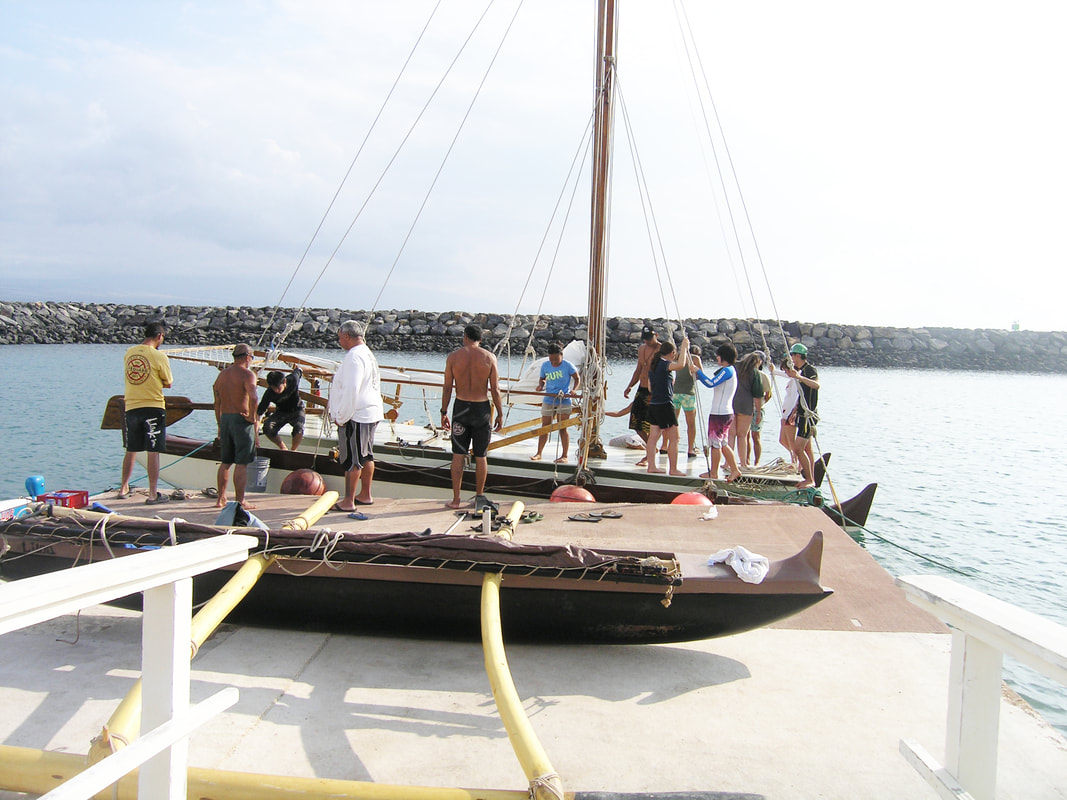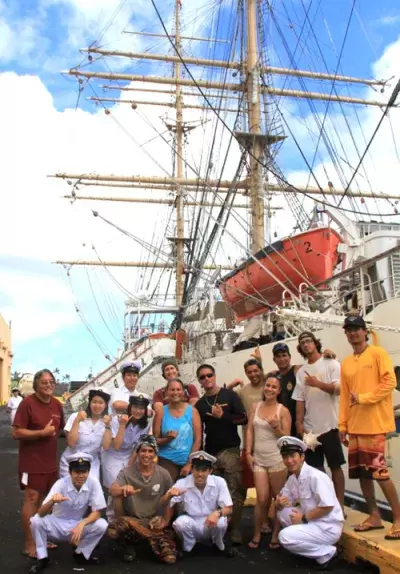One special connection was made between Tiger and Tora Mosai, a professor at one of the universities. Dennis explains: “They actually hit it off, connected. He teaches, well he used to teach at a university where some of the students that are here attended. He did extensive research on maritime conditions around the world. He was so inspired by Hōkūleʽa. Even before Hōkūleʽa he did research on Polynesian Voyages. Some of his research was in Japan, the early era of the discovery of Japan, ancient names and mythologies and what he’s finding is a lot of connections in Polynesia with Japan in those early years. What he was finding is that there seems to be more contact and more communication, more interchange than modern people believe. We think insular, little spheres, but you know there’s the larger sphere of the whole ocean…they (Tiger and Mosai) inspired the rest of the community about building a vessel.”
“So he came on, it was a job you know, the government was paying him. But then he got on Hōkū and he was like wow, non- instrument. He knew instruments upside down backwards, celestial navigation upside down backwards, but without instruments and then the whole cultural side of it, the background, the basis, the foundation of maritime traditions, it was like wow, heavy yeah. Both of them, Kazu as well as Tomo were just awed by the whole thing, really got involved and it became more than just a job. ‘We’re going to take care of you in Japan and we want to learn from you guys too.’”
At the heart of voyaging is old knowledge that lives in the unconscious mind and allows navigators to connect with the tangible world through intangible means. Tomo got a glimmer of this while on a training sail to Kauaʽi from Oʽahu.
“So he came on and mid-channel we was talking story, it started raining, pouring, no can see the stars and he goes, ‘How can you tell where you going?’ I told him, you got to feel the waves. In the middle of the rain, he kind of threw it out, ‘Hey, what if I bring students? Would you guys be open to do something with maritime students?’ You know, local style, yeah sure come. These guys when they say something, they serious, they going to find a way to do it.”
Dennis was scheduled to give a lecture, “Kamakura was trying to build this canoe; they asked me to come to talk about what are the challenges to building a canoe from a grass roots standpoint. Cause we’re (Kauaʽi) building our canoe and it’s 10 years in the making. I can tell you all the challenges, a long process, so I talk about that. What is the focus? You got to have a good reason. What’s your foundations? You got to have committed people, some financial income, it’s always a struggle.”
Tomo quickly decided to seize this opportunity, “He lives in Toyama, on the whole other side of the island. So he rushes home, drives back to Kamakura and he sits in, listens to the lecture and he stays over night with us and we end up talking story, the three of us (Tomo, Kyoko, Dennis) until 3:00 in the morning and in that time, the three of us develop this concept, this idea, even a curriculum you might say on integrating Polynesian wayfinding into Japanese maritime curriculum on navigation and decide to move forward and try to develop an international agreement. I flew back to my college after that, he goes back, Kyoko’s like the go-between. Kyoko’s kind of like the glue in a sense; she’s the one keeping us grounded. She knows from the English as a second language standpoint, what are some of the pitfalls, what are some of the ways to get these kids to open up, get them to work to increase their own language abilities.”
In record time, this dynamic triumvirate had a formal agreement. “Within 9 months we had an international agreement signed, we have exchanges, we have the president coming over, meeting us, seeing our campus. Real formal people, they coming in a suit and tie and I’m in jeans and a t-shirt. You know I got to wear an aloha shirt, I got to wear shoes, you know, I don’t have nice pants. But it’s cool and they invite us to go there to see their place and that’s within 9 months.







 RSS Feed
RSS Feed
